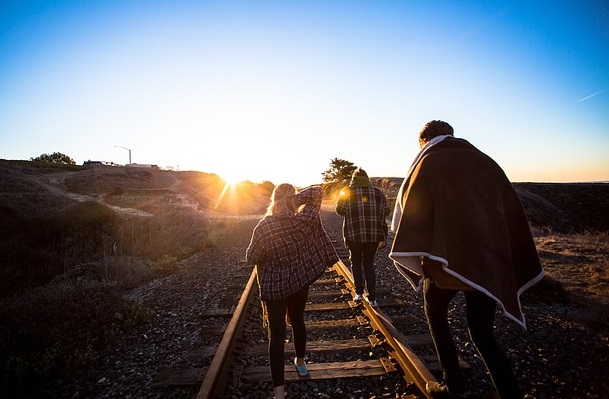We need to make housing accessible for young people leaving Out-of-Home-Care

Little attention has been given to vulnerable young people in the context of housing affordability. Jason Juretic, CEO of Stepping Stone House, argues that the Government should extend funding for youth from 18 to 21 years old.
The past few months have seen housing affordability in Australia debated from a number of angles. Whatever your opinion on the issue, it’s clear that the cost of breaking into today’s housing market is unreachable to many – and for our most vulnerable members of society, this is doubly true.
The lack of affordable housing has well and truly hit home (excuse the pun) for young people in Australia. However, little attention has been given to a specific group of vulnerable young people: the 43,400 children and teens living in Out-of-Home-Care (OOHC) [1].
Young people living in OOHC have been placed in the care of the Minister to escape environments of domestic violence, child abuse, neglect and drug addiction, to name just a few scenarios. Their housing and care is typically funded until they reach 18 years, after which time they must fend for themselves.
In an insightful article about OOHC, Paul McDonald, CEO of Anglicare, points out:
“Regardless of the young person’s current circumstance, the support they have received under Australian state care must end by their 18th birthday. This includes young people with a disability, those still at school or unemployed, those suffering from depression or a physical illness, and those who are new parents.
“It is the age of the child, not their readiness to live independently, that determines when care is terminated in Australian child welfare systems. So, every year over 3,000 young people in Australia are shown the door from their care environment when they turn 18.” [2]
What happens to young people leaving OOHC at age 18?
While it’s comforting to think that thousands of children and young people at risk are cared for by the Minister, what happens to them when they turn 18? Here are some likely scenarios:
- They look for low-paying, full-time jobs to survive. When a young person leaves OOHC care, they are often entering the highly competitive and expensive rental markets of our capital cities, of which Sydney is the most unforgiving. The result is that the young person has to go into whatever full-time work they can find, just to survive and pay the rent.
Often, finding full-time employment means giving up the opportunity to complete tertiary and higher education. It’s common knowledge that only about 2% of young adults coming out of care complete their tertiary education. And without a qualification, full-time employment opportunities will be limited and have low wages.
- They struggle to cope in rented accommodation – financially and emotionally. It’s obvious that someone who comes out of care or is homeless at the age of 18 can’t meet the cost of high rental prices; especially in Sydney.
Sharehousing is a common way around this. However, life’s challenges have been much harder for this vulnerable group in society. In fact, many psychologists believe that youth who have been through significant trauma and experienced homelessness are emotionally and intellectually delayed by up to two years.
Clearly, young people leaving OOHC must bear the burden of emotional trauma and anger management issues. Many struggle to live cohesively in a sharehouse environment and end up being kicked out. They must then fend for themselves on the streets or couch surf.
- They may never own their own home. The concept of a young person leaving OOHC one day purchasing a house is almost unattainable. Young people in this situation have no financial assistance from parents or family, and unfortunately this kind of support is now nearly essential when purchasing a house in Sydney or other capital cities.
- They’re at risk of repeat homelessness. The knock-on effect of the points above is an increased risk of repeat homelessness.
At 18, young people are leaving OOHC with the mental age of a 16-year-old, which makes it increasingly difficult for them to secure and retain a job and deal with the challenges of independent living.
The result? 50% of young people leaving care will be homeless or have experienced homelessness within a year [3].
Is there a solution?
Yes.
To ensure that young people leaving OOHC don’t end up at risk of repeat homelessness, the Government should extend funding for youth ‘aging out’ from 18 to 21 years old.
Ideally, the Government should provide subsidised housing and apartments for at-risk youth up to the age of 25 who do not have parental or adult guidance and financial support. The cost of subsidised housing should also be lowered to make renting more accessible.
Another great strategy would be for the Government to fund a developmental program for youth that addresses and educates them about life skills, employment skills, relationship-building and mental health issues.
There is a fantastic organisation called The Home Stretch who are specifically focusing on supporting this initiative and solution. At the same time, Stepping Stone House has been providing this exact kind of support since 1989, resulting in 33% of our graduates achieving a tertiary education, and 100% of residents employed upon graduation from SSH*.
From Government to institutions to not-for-profit organisations, we need to safeguard young people leaving OOHC from the risk of repeat homelessness. The time to act is now.
*This refers to internal analysis conducted over the last six years for residents who have successfully graduated from our Independent Living Program.
[1] Criterion Conferences, 2017
[2] Criterion Conferences, 2017
Housing Affordability Online Consultation:
Q: What can be done to improve housing affordability?
Jason Juretic is CEO of Stepping Stone House, a not for profit organisation providing medium to long term accommodation and development for young people who are homeless, or who are at risk of homelessness or are living away from their families aged 12 to 24 years old.















Pingback: The cycle of youth homelessness in Australia – and how you can help - Openforum